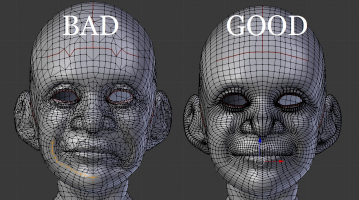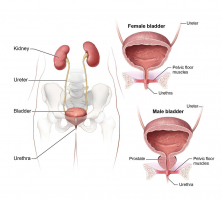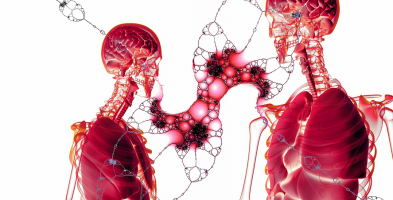Top 10 Best Books On Mechanical Engineering
Mechanical engineering is a broad and exciting field that combines principles of physics, mathematics, and materials science to design, analyze, and ... read more...manufacture mechanical systems. Whether you are a student or a professional in this field, books can be a great resource to deepen your knowledge, learn new skills, and keep up-to-date with the latest developments. However, with so many options available, it can be challenging to choose the right book for your needs. In this article, we have compiled a list of the best books on mechanical engineering, covering topics such as thermodynamics, mechanics, design, and manufacturing.
-
Machinery's Handbook Toolbox, authored by Erik Oberg, is an essential reference book for engineers, machinists, students, and anyone who works with metal. This comprehensive guidebook has been the go-to source for industrial professionals for over a century, providing a wealth of information on everything from mathematical formulas to manufacturing processes.
Erik Oberg, one of the original authors of Machinery's Handbook, has continued to revise and expand upon this classic reference book, ensuring that it remains up-to-date with the latest advances in the industry. Oberg's knowledge and experience in the field of mechanical engineering is apparent throughout the book, making it an invaluable resource for anyone looking to improve their knowledge and skills.
Among the best books on mechanical engineering, Machinery's Handbook Toolbox covers a wide range of topics, including mathematics, mechanics and strength of materials, properties of materials, manufacturing processes, threading, gears, and much more. With over 2,800 pages of information and over 16,000 illustrations, this book provides a comprehensive overview of the entire field of mechanical engineering.
The introduction to the book provides an overview of the topics covered and explains how to use the book to its full potential. It also includes a history of Machinery's Handbook and its importance to the industry. The introduction also outlines the many updates and revisions made to the book over the years, ensuring that it remains a relevant and vital resource for anyone working in the field of mechanical engineering.
In summary, Machinery's Handbook Toolbox by Erik Oberg is an essential reference book for anyone working in the field of mechanical engineering. With its comprehensive coverage of a wide range of topics, this book is an invaluable resource for anyone looking to improve their knowledge and skills in the industry.
Author: Erik Oberg
Link to buy: https://www.amazon.com/Machinerys-Handbook-Toolbox-Erik-Oberg/dp/0831137312/
Ratings: 4.7 out of 5 stars (from 928 reviews)
Best Sellers Rank: #14,862 in Books
#1 in Machinery Engineering (Books)
#1 in Mechanical Engineering (Books)
#8 in Industrial Manufacturing Systems

Photo by ThisisEngineering RAEng on Unsplash 
Photo by Pavel Neznanov on Unsplash -
Fundamentals of Engineering Thermodynamics, written by Michael J. Moran, Howard N. Shapiro, Daisie D. Boettner, and Margaret B. Bailey, is a comprehensive textbook designed for students studying thermodynamics in the field of engineering. The book covers a range of topics, including energy, work, heat transfer, and thermodynamic cycles.
Michael J. Moran, the lead author of the book, was a professor emeritus of mechanical engineering at Ohio State University. He was also a fellow of the American Society of Mechanical Engineers (ASME) and a recipient of numerous awards for his contributions to engineering education. Howard N. Shapiro, another author of the book, was a professor emeritus at Iowa State University and a fellow of ASME and the American Society for Engineering Education (ASEE). Daisie D. Boettner and Margaret B. Bailey are also experienced professors in the field of mechanical engineering.
The book begins with an introduction to the basic concepts of thermodynamics, such as temperature, pressure, and energy. It then covers the first law of thermodynamics, which relates to energy conservation, and the second law of thermodynamics, which deals with the direction of energy flow. The book also discusses thermodynamic properties and their relationships, as well as applications of thermodynamics to various engineering systems. Throughout the book, the authors provide numerous examples, exercises, and case studies to help students apply their knowledge of thermodynamics to real-world problems.
Author: Daisie D. Boettner, Margaret B. Bailey, Michael J. Moran and Howard N. Shapiro
Link to buy: https://www.amazon.com/Fundamentals-Engineering-Thermodynamics-Michael-Moran/dp/1118412931/
Ratings: 4.4 out of 5 stars (from 220 reviews)
Best Sellers Rank: #143,776 in Books
#10 in Mechanical Engineering (Books)
#12 in Thermodynamics (Books)
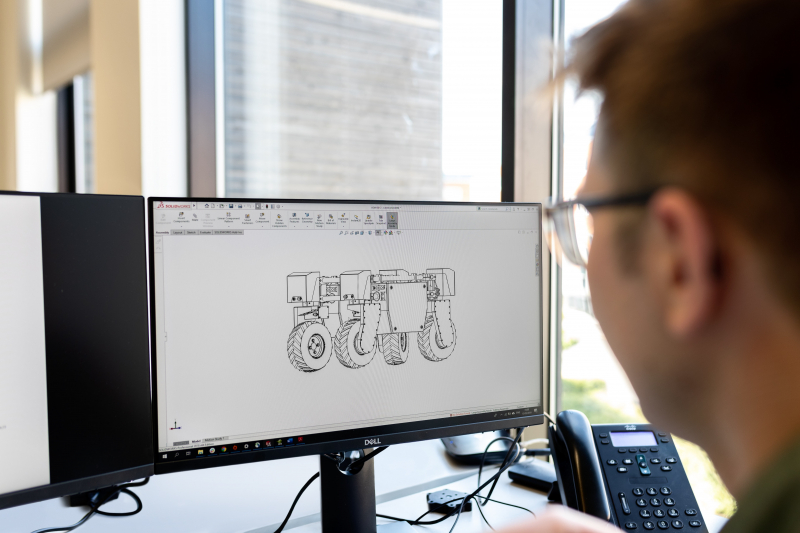
Photo by ThisisEngineering RAEng on Unsplash 
Photo by ThisisEngineering RAEng on Unsplash -
The Machinery's Handbook Pocket Companion, authored by Michael Boles and Yunus Cengel, is a must-have reference for professionals and students in the field of mechanical engineering. The book is a condensed version of the larger Machinery's Handbook, which is considered the most comprehensive and authoritative reference book in the mechanical engineering industry.
The Machinery's Handbook Pocket Companion covers a wide range of topics including mathematics, mechanics and strength of materials, properties of materials, dimensioning, gauging and measuring, tool and manufacturing processes, fasteners, threads, and gears, as well as machine elements and manufacturing data.
The book's introduction provides a brief history of the Machinery's Handbook and its evolution over time. It highlights the book's usefulness as a reference for solving practical problems encountered in the field of mechanical engineering. The introduction also emphasizes the importance of the book in supporting the education and training of new engineers and technicians.
Overall, the Machinery's Handbook Pocket Companion, one of the best books on mechanical engineering, is an essential resource for mechanical engineers, machinists, toolmakers, and other professionals in the field. Its comprehensive coverage, clear and concise explanations, and practical examples make it an invaluable reference for solving complex engineering problems.
Author: Michael Boles and Yunus Cengel
Link to buy: https://www.amazon.com/Thermodynamics-Engineering-Yunus-Cengel-Dr/dp/0073398179/
Ratings: 4.5 out of 5 stars (from 261 reviews)
Best Sellers Rank: #364,485 in Books
#53 in Thermodynamics (Books)
#91 in Mechanical Engineering (Books)

Photo by ThisisEngineering RAEng on Unsplash 
Photo by ThisisEngineering RAEng on Unsplash -
Mechanical Engineering for Makers is a book written by Samer Najia and Brian Bunnell. Brian Bunnell is a mechanical engineer with over 20 years of experience in the field. The book, which is aimed at makers, hobbyists, and DIY enthusiasts, provides an introduction to mechanical engineering principles and simple machines, as well as hands-on guidance for designing and building mechanical devices.
In the introduction to the book, Bunnell and Najia emphasize the importance of mechanical engineering in our everyday lives, from the machines that power our homes and vehicles to the devices we use in our daily routines. He also notes that mechanical engineering is an essential component of the maker movement, as makers are often tasked with designing and building their own mechanical devices.
The authers goes on to explain that the book is designed to be accessible to makers with little or no background in mechanical engineering. The first section of the book provides an overview of mechanical engineering principles and terminology, while the second section focuses on specific types of simple machines, such as levers, pulleys, and gears.
The remainder of the book is devoted to hands-on projects that allow readers to apply the concepts they've learned to real-world design challenges. These projects include building a crane, a catapult, and a Rube Goldberg machine, among others.
Overall, Mechanical Engineering for Makers is a valuable resource for anyone interested in learning more about mechanical engineering and applying those principles to their own DIY projects. With its clear explanations and hands-on projects, the book provides a solid foundation for makers to develop their skills and unleash their creativity.
Author: Samer Najia and Brian Bunnell
Link to buy: https://www.amazon.com/Mechanical-Engineering-Makers-Hands-Designing/dp/1680455877/
Ratings: 4.3 out of 5 stars (from 509 reviews)
Best Sellers Rank: #40,808 in Books
#3 in Hydraulics (Books)
#3 in Electric Machinery & Motors
#9 in Machinery Engineering (Books)

Photo by ThisisEngineering RAEng on Unsplash 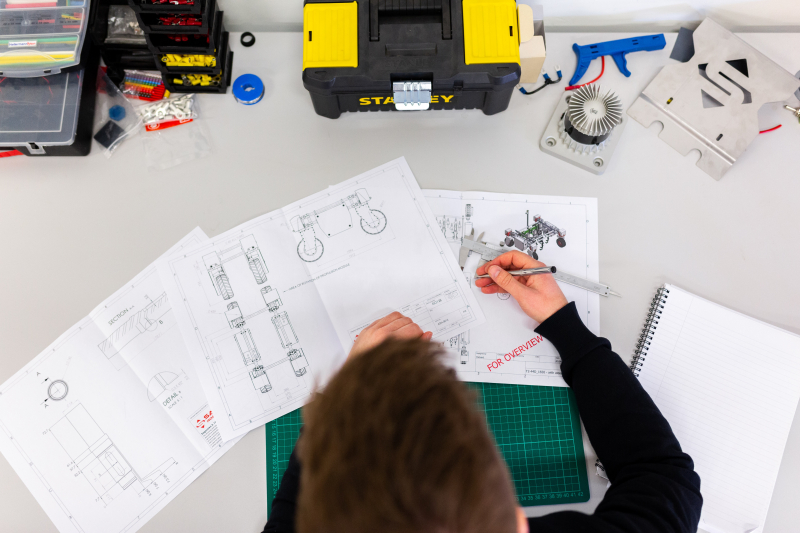
Photo by ThisisEngineering RAEng on Unsplash -
Thermodynamics is the branch of physics that deals with the relationships between heat, energy, and work. It is a vital subject for engineers, as it underlies many aspects of modern technology, including power generation, refrigeration, and propulsion systems. One of the most popular textbooks on this subject is "Thermodynamics: An Engineering Approach" by Yunus Cengel and Michael Boles. It is among the best books on mechanical engineering.
Yunus Cengel is a professor of mechanical engineering at the University of Nevada, Reno. He has authored or co-authored over 20 textbooks and has received numerous awards for his contributions to engineering education. Michael Boles is also a professor of mechanical engineering, and he has published over 50 technical papers in the field.
The book "Thermodynamics: An Engineering Approach" is written for students in mechanical, aerospace, and chemical engineering programs. It covers the fundamental principles of thermodynamics, including energy, entropy, and the laws of thermodynamics. The authors emphasize the practical applications of thermodynamics, providing numerous real-world examples and problems that help students understand how these principles are used in engineering.
The book is organized into four parts. Part One introduces the basic concepts of thermodynamics, including temperature, energy, and the properties of substances. Part Two covers the first and second laws of thermodynamics, as well as their applications to engineering systems. Part Three discusses thermodynamic cycles and power generation, including steam power plants and gas turbines. Finally, Part Four covers refrigeration and heat pump systems.
"Thermodynamics: An Engineering Approach" is widely regarded as one of the best textbooks on this subject. It is well-written, comprehensive, and includes many helpful examples and problems. It is an essential resource for any student or professional engineer who wants to understand the principles of thermodynamics and their applications in the real world.
Author: Michael Boles , Yunus Cengel
Link to buy: https://www.amazon.com/Thermodynamics-Engineering-Yunus-Cengel-Dr/dp/0073398179/
Ratings: 4.5 out of 5 stars (from 261 reviews)
Best Sellers Rank: #364,485 in Books
#53 in Thermodynamics (Books)
#91 in Mechanical Engineering (Books)

Photo by Jeswin Thomas on Unsplash 
Photo by ThisisEngineering RAEng on Unsplash -
Engineer’s Practical Databook is an indispensable reference guide for technical professionals, engineers, and students alike. Authored by J. Smith, a seasoned engineer with years of experience in the industry, the book is packed with practical information that is essential for engineers in their day-to-day work.
The book is organized into chapters that cover a wide range of topics including mathematics, mechanics, thermodynamics, materials science, and more. Each chapter provides concise information, formulas, tables, and graphs that are easy to understand and use. The book also includes a section on engineering ethics, which highlights the importance of ethical behavior in the profession.
In the introduction, Smith emphasizes the importance of having a practical databook as a resource for engineers. He notes that while there are many books available that cover engineering theory, few provide practical, usable information that can be applied in real-world situations. He explains that his book is designed to fill this gap by providing engineers with the information they need to solve problems and make informed decisions quickly and efficiently.
The author also emphasizes the importance of staying up-to-date with the latest technological advancements and changes in the industry. He advises readers to use the databook as a starting point and to supplement their knowledge with additional resources as needed.
Overall, Engineer’s Practical Databook is an excellent resource for technical professionals who need quick access to practical information in their daily work. Whether you are an experienced engineer or a student just starting your career, this book is sure to be a valuable addition to your reference library.
Author: Jay Smith
Link to buy: https://www.amazon.com/Engineers-Practical-Databook-Technical-Professionals/dp/1980619344/
Ratings: 4.6 out of 5 stars (from 704 reviews)
Best Sellers Rank: #35,105 in Books
#7 in Engineering (Books)
#22 in Reference (Books)

Photo by ThisisEngineering RAEng on Unsplash 
Photo by ThisisEngineering RAEng on Unsplash -
Machinery's Handbook, first published in 1914, is a comprehensive reference book that covers a vast array of topics related to mechanical engineering, manufacturing, and design. The book has been widely regarded as an indispensable resource for engineers, machinists, toolmakers, and students in the field of mechanical engineering. The current edition, the 31st edition, has been updated to include the latest information and developments in the field.
One of the book's authors, Erik Oberg, was a prominent mechanical engineer and the editor-in-chief of Industrial Press. Oberg was one of the co-authors of the first edition of Machinery's Handbook and played a key role in its development and subsequent editions. He was also a member of the American Society of Mechanical Engineers (ASME) and a fellow of the American Society of Tool and Manufacturing Engineers (ASTME).
The 31st edition of Machinery's Handbook is divided into four main sections: math, mechanics and strength of materials, properties, treatment, and testing of materials, and manufacturing processes. Each section covers a broad range of topics, from basic arithmetic and algebra to complex calculations involving differential equations and calculus. The mechanics and strength of materials section cover topics such as stress and strain, beam deflection, and fatigue. The properties, treatment, and testing of materials section cover topics such as metallurgy, heat treatment, and non-destructive testing. The manufacturing processes section covers topics such as casting, forging, and welding.
Overall, Machinery's Handbook is an essential reference book for anyone working in the field of mechanical engineering or manufacturing. Its comprehensive coverage of a wide range of topics and its easy-to-use format make it an indispensable tool for engineers, machinists, and students alike.
Author: Henry H Ryffel, Erik Oberg and Franklin D Jones
Link to buy: https://www.amazon.com/Machinerys-Handbook-Reference-Mechanical-Manufacturing/dp/0831125756/
Ratings: 4.7 out of 5 stars (from 454 reviews)
Best Sellers Rank: #397,771 in Books
#49 in Metallurgy Materials Engineering
#634 in Engineering Reference (Books)
#782 in Civil & Environmental Engineering

Photo by ThisisEngineering RAEng on Unsplash 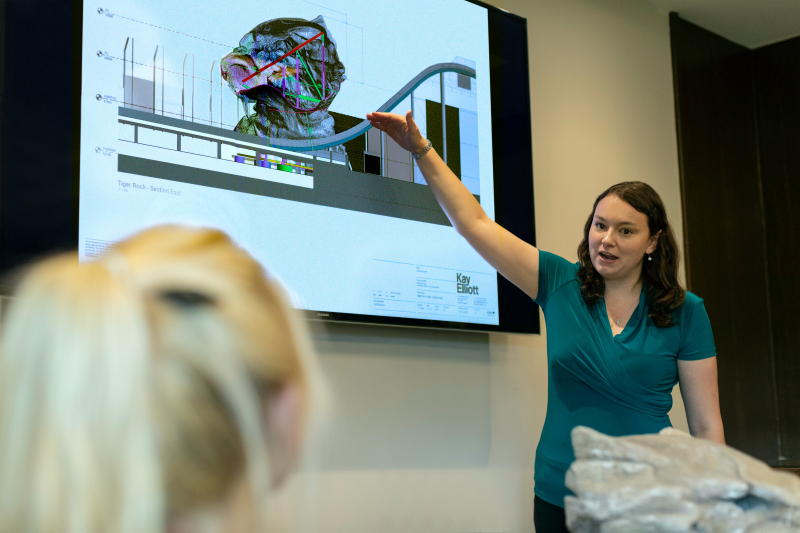
Photo by ThisisEngineering RAEng on Unsplash -
An Introduction to Mechanical Engineering, written by Jonathan Wickert and Kemper Lewis, is a comprehensive textbook that provides an introduction to the field of mechanical engineering. This book is a valuable resource for students pursuing a degree in mechanical engineering, as well as for practicing engineers looking to expand their knowledge base.
Jonathan Wickert is a professor emeritus of mechanical engineering at Iowa State University. He has authored numerous technical articles and co-authored several textbooks on engineering mechanics and dynamics. Kemper Lewis is a professor of mechanical and aerospace engineering at the University at Buffalo, where he also serves as the director of the Aerospace and Mechanical Engineering Department.
The book starts by introducing the fundamental concepts of mechanical engineering, including the principles of mechanics, thermodynamics, and materials science. It also provides an overview of the design process and the role of engineering in society. The book covers a range of topics such as stress and strain analysis, fluid mechanics, heat transfer, and control systems, among others.
What sets this book apart is the use of real-world examples and case studies that demonstrate the practical application of the concepts covered in the book. Additionally, the book includes a variety of pedagogical features such as learning objectives, end-of-chapter summaries, and review questions to aid in student comprehension.
Overall, An Introduction to Mechanical Engineering is a well-written, informative, and engaging textbook that provides a solid foundation for students studying mechanical engineering. It is an essential resource for any student or practicing engineer looking to expand their knowledge and understanding of the field
Author: Kemper Lewis and Jonathan Wickert
Link to buy: https://www.amazon.com/Introduction-Mechanical-Engineering-Jonathan-Wickert/dp/1305635132/
Ratings: 4.7 out of 5 stars (from 41 reviews)
Best Sellers Rank: #928,532 in Books
#318 in Mechanical Engineering (Books)

Photo by ThisisEngineering RAEng on Unsplash 
Photo by ThisisEngineering RAEng on Unsplash -
Shigley's Mechanical Engineering Design, authored by Richard Budynas and Keith Nisbett, is a widely-used textbook in mechanical engineering. With a focus on design principles and their applications, the book provides students with a comprehensive understanding of the design process for mechanical components and systems. The latest edition of the book, available on Amazon, is the 11th edition, published by McGraw Hill Education.
Richard G. Budynas, a professor of mechanical engineering at Rochester Institute of Technology, is a renowned author and expert in mechanical engineering design. He has authored several books, including Advanced Strength and Applied Stress Analysis and Applied Mechanics of Materials. Keith J. Nisbett, who co-authored the book, is also a professor of mechanical engineering at RIT and has expertise in the areas of machine design, vibrations, and computer-aided design.
The book starts with an introduction to the fundamental principles of mechanical engineering design, including statics, dynamics, materials, and manufacturing. It then moves on to cover various topics related to design, such as stress and deformation analysis, fatigue failure, surface failure modes, and the selection of materials for specific applications. The book also includes chapters on mechanical power transmission, bearings, and gears, which are essential components in many mechanical systems.
Throughout the book, the authors have included numerous real-world examples, case studies, and design projects to help students understand the practical applications of the concepts discussed. The book also includes a comprehensive set of design problems at the end of each chapter, which provides students with an opportunity to apply the concepts learned in the chapter and reinforce their understanding.
In summary, Shigley's Mechanical Engineering Design is a comprehensive and well-written textbook that provides students with a solid foundation in mechanical engineering design. It is an essential resource for mechanical engineering students, as well as practicing engineers who need to design and analyze mechanical components and systems.
Author: Richard Budynas and Keith Nisbett
Link to buy: https://www.amazon.com/Shigleys-Mechanical-Engineering-Design/dp/1260569993/
Ratings: 4.5 out of 5 stars (from 51 reviews)
Best Sellers Rank: #218,465 in Books

Photo by ThisisEngineering RAEng on Unsplash 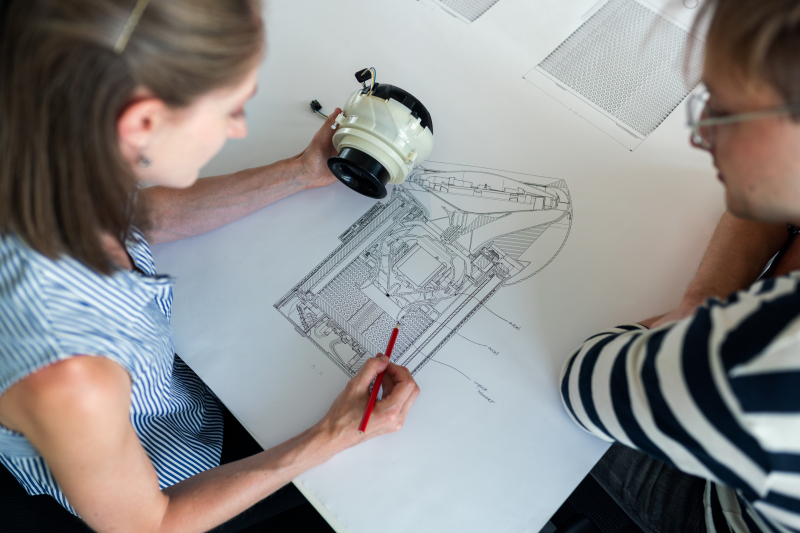
Photo by ThisisEngineering RAEng on Unsplash -
The Mechanical Engineer's Pocket Book, written by Roger Timings, is an essential reference tool for any practicing mechanical engineer or student. With over 700 pages of information, the book covers a vast range of topics, including thermodynamics, fluid mechanics, engineering materials, mechanical design, and manufacturing processes.
Roger Timings is a chartered engineer and a fellow of the Institution of Mechanical Engineers. He has over 30 years of experience working in the engineering industry and has also taught mechanical engineering at various universities in the UK. In addition to this pocket book, he has authored several other books on engineering and related subjects.
The book's introduction highlights its primary purpose, which is to provide a concise and comprehensive source of technical information to mechanical engineers. It is designed to be a quick reference guide that engineers can use to find essential formulas, data, and tables that they need in their daily work.
The book's content is arranged in a logical order, with each section building on the previous one. The chapters start with the basics, such as units and measurements, and progress to more complex topics such as materials selection, stress analysis, and manufacturing processes.
The book also includes numerous examples and illustrations, making it easy for readers to understand the concepts presented. Additionally, it contains a comprehensive index, making it easy to find specific information quickly.
Overall, the Mechanical Engineer's Pocket Book is an indispensable tool for any practicing mechanical engineer or student. Among the best books on mechanical engineering, it is a must-have for anyone who needs a quick and reliable source of technical information on mechanical engineering.
Author: Roger Timings
Link to buy: https://www.amazon.com/Mechanical-Engineers-Pocket-Newnes-Books/dp/0750665084/
Ratings: 4.6 out of 5 stars (from 96 reviews)
Best Sellers Rank: #1,267,961 in Books
#495 in Mechanical Engineering (Books)
#3,073 in Civil & Environmental Engineering

Photo by ThisisEngineering RAEng on Unsplash 
Photo by ThisisEngineering RAEng on Unsplash














